

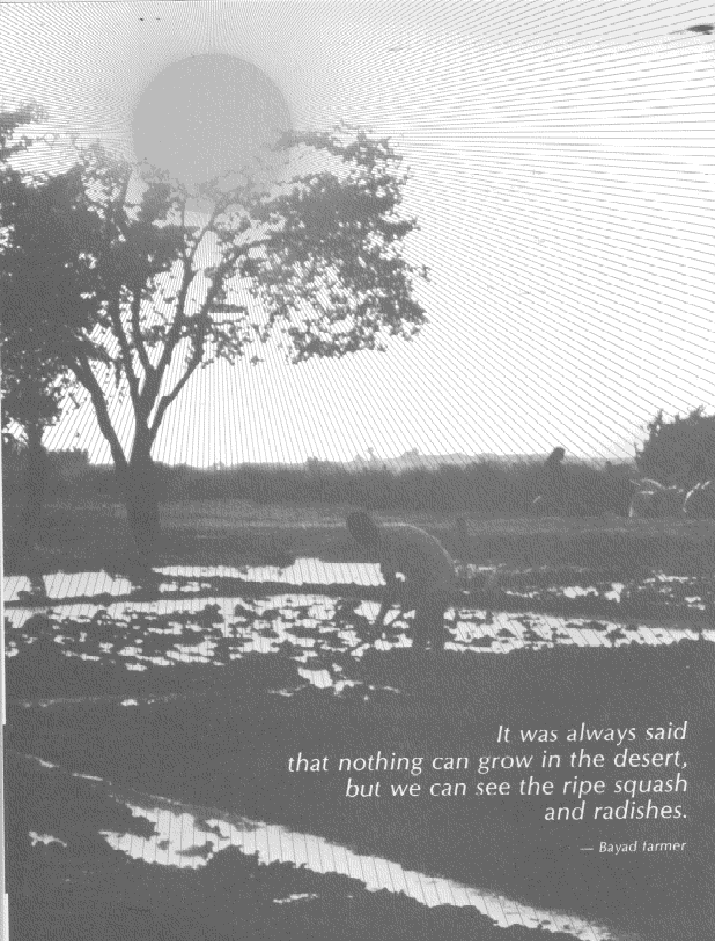
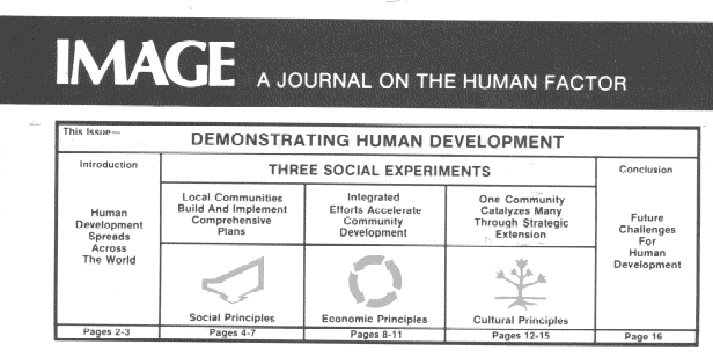 |
DEMONSTRATING HUMAN DEVELOPMENT
INTRODUCTION: HUMAN DEVELOPMENT SPREADS ACROSS THE WORLD
Preview of Three Social Experiments
PART l: LOCAL COMMUNITIES BUILD AND IMPLEMENT COMPREHENSIVE PLANS
Local Awakening
The First Experiment: Fifth City for the World
Creating Comprehensive Community Reformulation Models
PART Il: INTEGRATED EFFORTS ACCELERATE COMMUNITY DEVELOPMENT
The Moral Issue
The Second Experiment: Every Hour on the Hour
Demonstrating Rapid SocioEconomic Development Methods
PART lil: ONE COMMUNITY CATALYZES MANY THROUGH STRATEGIC EXTENSION
Global Responsibility
The Third Experiment: Toward Two Million Villages
Designing Multiple Village Development Models
CONCLUSION: FUTURE CHALLENGES FOR HUMAN DEVELOPMENT
New Demands in the 1980s
This IMAGE is dedicated to the local residents in villages and neighbourhoods around the world who worked together to create demonstrations of human community. In the last 18 years the Institute of Cultural Affairs has been privileged to work in more than 350 of these communities through three experiments in human development. This IMAGE presents a broad overview of [earnings from this work.
THE INSTITUTE OF CULTURAL AFFAIRS
Copyright .c ICA 1981
Prepared by the Research Staff of
A Quarterly Publication
Vol. XI No. 3
IMAGE
Introduction
Human Development Spreads Across the WorId
In the isolation of small towns or the complexity of large cities, in industrial nations where the worker is a faceless statistic or in developing nations where the labourer is sometimes treated as a beast of burden, there is an urgency for the recovery of local community. Human development is an adventure which involves men and women of all ages and backgrounds in a mutual effort to further this recovery. The spirit of participation, cooperation and responsibility among residents is a clue to human development. Substantive changes in the environment, organization and pride ot the community reflect people's confidence in the future.
Part 1: Local Communities Build and Implement Comprehensive Plans
The early 1960s revealed the urgent need to prepare local leaders to deal with the depth human issues facing their communities. Residents of Fifth City, a black ghetto on Chicago's west side, considered themselves victims of racial prejudice, economic dependence and political isolation.
In 1963 residents and Institute staff began working toward a comprehensive model for local development. Using themselves and their community as a laboratory, they planned, developed and tested the first Fifth City model. The pilot project also articulated five social development principles and developed Imaginal Education, which became the basis for Fifth City's model preschool.
As it became clear that this local planning process and comprehensive integrated approach effectively released responsible local action, two additional communities became laboratories for testing human development in 1970. These laboratories were the socially depressed aboriginal community of Oombulgurri in West Australia and the economically destitute atoll of Majuro in the Marshall Islands.
After the Marshalls and Oombulgurri projects had been initiated, the comprehensive planning process was streamlined and tested to discover ways other communities could do more quickly what it had taken Fifth City ten years to do. An ongoing process by which neighbourhood and task groups carried on weekly evaluation and strategic planning was characteristic of the three projects in this first social experiment.
Part 11: Integrated Efforts Accelerate Community Development
In 1975 human development efforts moved beyond the original three projects with a second experiment. This focused on methods of rapid socioeconomic development. In Experiment II, pilot communities were selected in each time zone, increasing the total number of demonstration projects to 24. Because these communities represented a diverse range of socioeconomic settings and regional issues, they served as demonstrations to communities throughout a larger area.
Each project was launched with a weeklong consultation in which local residents and guest consultants produced a fouryear action plan to meet particular local needs. Residents
and auxiliary staff began to implement plans immediately following the consultations. Teams of volunteer consultants periodically visited the projects to facilitate rapid programme actuation. Within two to four years substantive changes occurred in each community which transformed its living environment, economic base, and systems of local care and organization. By 1978 an additional 29 Human Development Projects had been initiated as pilots in other regions and nations.
Between 1980 and 1981, field teams visited 43 project communities to help document development results. The evaluation process encouraged residents to summarize what had been learned about human development and build plans for extending what had been learned to others.
Part 111: One Community Catalyzes Many Through Strategic Extension
From the earliest social experiment in Fifth City, replication was envisaged. The slogan Fifth City For The World meant to the people of that community that development methods they created would be applicable in other communities as well. Throughout the second social experiment, Every Hour On The Hour, the potential for replication in a region or nation became a criterion for site selection.
By 1976 an experiment in replication began in Maharashtra India to design a model of rapid development in a large number of villages. The strategy was both intensive and extensive. Now in its third phase, the experiment included three intensive block demonstrations involving clusters of villages and extensive statewide community meetings in 3000 villages of Maharashtra State.
Extension strategies now being tested
in the Philippines Indonesia, Korea, Egypt, Kenya, Zambia, Venezuela and
the United States are characterized by the simultaneous initia- tion of
programmes in villages clustered around a pilot pro- ject. In Kenya, additional
projects have been initiated across the nation as well. Extension permits
more effective public and private sector support of the development process
by providing services to many villages simultaneously.
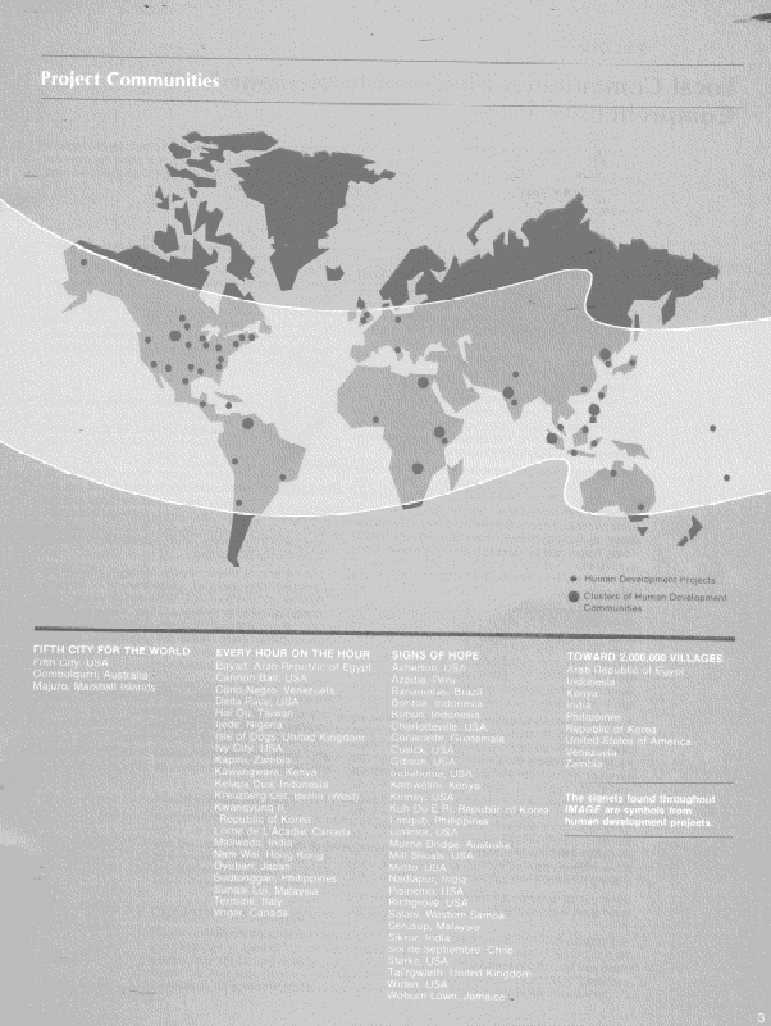 Part
One
Part
One
Local Communities Build and Implement Comprehensive Plans
. . . many of the problems of these rural villages are of a nature which are insoluble by individuals but require the combined efforts of many or most of the inhabitants. If this is true then there is a need not only for agreement upon the problems and the solutions within the village, but also for a village organization which can harness the village resources and direct their expressions into action.
Kenneth W. Newell, World Health Organization, Geneva, Switzerland, 1975
Methods For Responsible Local Action
In the aftermath of World War II the
industrialized part of the world was
swept by trends toward massive
urban complexes, unbelievable
breakthroughs in scientific tech-
.. nology, and secularization which
called into question previously understood answers
to life. Creating overwhelming problems in the cit-
ies, these trends also disrupted the economic, social
and cultural patterns of small towns. During the
same period the developing world was engulfed in
trends toward independence and economic devel-
opment which disrupted traditional village life.
Then a worldwide awareness dawned which radically reshaped the human imagination. Technology put people on the moon and almost overnight instant communication across the planet occurred. Even in remote areas, transistor radios beamed the latest music and uptodate world news. This awakening happened to local people everywhere. Consciousness of being a significant part of one world and awareness of new potentials stirred action and responsibility.
During the last several decades a growing current of expectation became evident as countless groups of people decided to reshape their own lives, their communities and their nations. Labour strikes in Poland, taxpayer rebellions in the United States, student revolts in Latin America, Japanese demonstrations against nuclear carriers and African independence movements are just a sample.
As local initiative became a major trend in world development, it spawned experimentation with practical methods which allow people to plan effectively for building their own future. Support for development which begins at the grassroots has fostered regional and continental movements, such as the Communitorios Basicos in Latin America, and total nationbuilding efforts like the Harambee local selfhelp effort in Kenya, and the Samael Undong village movement in Korea. These and other responses reflect an understanding that the elements required for human development are already present in virtually every local community.
Born out of a sense of small town isolation and frustration with the complex problems of the cities,
a search began for recovered community. Independently and in some of the most unexpected places, people reached the conclusion that the collapse of localcommunity was the root cause of many of the aberrations troubling societies. Fifth City, Oombulgurri and Majuro were early laboratories for the development and testing of innovative social methods.
Fifth City, situated four miles west of downtown Chicago in a decaying ghetto area, typified the major issues facing minority urban communities during the 1960s.
In Oombulgurri, West Australia, an aboriginal community faced the extinction of its great heritage and the collapse of its local structures. Through their decision to rebuild Oombulgurri, residents developed new selfconfidence and voluntarily rejected dependence on welfare.
The people of Majuro in the Marshall Islands are geographically isolated. Unawareness of modern technology and business methods had made them highly vulnerable to exploitation. Here residents pioneered a cooperative brokerage scheme and a dependable interisland transportation system which formed an economic cornerstone for the newly independent nation.
It was in these three laboratories
that five fundamental social principles were first articulated. These have
been refined and tested in numerous communities around the world and have
guided local human development in over 300 rural villages, small towns
and urban centres in the industrialized and developing worlds.
Effective Social Development
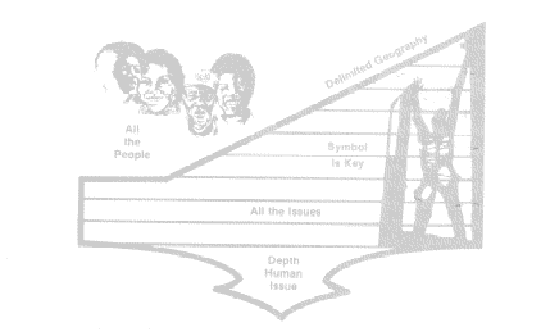
![]()
OPERATES WITHIN CLEARLY DELIMITED GEOGRAPHY
In order to produce visible results and create community identity, it is necessary to focus renewal efforts. Fifth City delimited a 40block project area and dramatized it by using a stylized map as a logo on signs throughout the community. One result is the shift from a transient community in 1965 with 10% home ownership to a stable one in 1980 with 65% home ownership.
DEALS WITH ALL THE ISSUES
The problems within a community are related and must therefore be tackled simultaneously. Fifth City faced issues as varied as unemployment, financing limitations, fear of the streets, poor schools and lack of services. Now its nationally recognized preschool and job retraining programme, locally owned commercial centre, 142 rehabilitated apartment units and reduced crime rate give a sense of a new community.
INVOLVES ALL THE PEOPLE
By involving all the people of a community, a consensus on future directions can be created. Fifth City created an infant school, afterschool activities, youth centre, men's and women's clubs, and elders programmes. The Mildred Robinson Elders Action Center, active block clubs, quality neighbourhood schools and cooperative relationship with the new hospital under construction reflect its consensus.
ADDRESSES THE DEPTH HUMAN ISSUE
By confronting its root issue a community is released to see the possibility of effective action in areas previously considered impossible. In Fifth City the depth human issue was the victim image which fostered selfdepreciation and crushed people's hopes. A new image pervades Fifth City today. Neighbourhood women have become fully licensed preschool teachers. A business association confidently oversees the development of the shopping centre and new industry.
CREATES KEY COMMUNITY SYMBOLS
Communities need social reminders of decisions they have made. Fifth City created the Iron Man as a symbol of the commitment to human development. The singing of community songs and regular publication of the local newspaper reinforced this decision. The Iron Man Statue and Plaza, the Community Center and Fifth City Business Careers-all symbols of the community's efforts-have never been vandalized.
, _ , ....

Once upon a time there were two villages connected by a single road. One village produced food for itself and its neighbour; the other provided both with hunting equipment. One day a huge dragon settled across the road, blocking travel between the two villages. Villagers attacked it with spears, which splintered against the beast's thick hide. They tried to lasso it, but the
dragon's flames burned the ropes to ashes. Week after week they laboured sacrificing many lives and finally giving up in despair. Their food was depleted and the supply of hunting equipment exhausted in the battle against the dragon. One day a youth climbed a tree to observe the dragon and discovered a remarkable thing; a farmer from a distant village was dumping garbage right under the dragon's snout An envoy was soon dispatched to ask the farmer to move his dump to a remote field. The dragon relocated to this new feeding area and the two villages were once again able to travel the road and serve each other. Ancient Japanese Myth
The Local Planning Process in Oombulgurri
Many local development efforts approach social issues as the villagers in the story did: by striking out at what appears to be the major problem. They assault headon whatever is immediately perceived as blocking the achievement of a desired goal with the intent of eliminating it. As the story illustrates, goaloriented problem solving tends to result in myopia which narrows a community's perspective and often blinds it from seeing beyond symptoms to the root cause of social pain.
Contradiction analysis is a method which views the situation from a broad perspective and identifies the deep sociological blocks contradicting the future vision. A plan of strategic action is then built to deal with the underlying contradictions rather than eliminate surface problems. In a Human Development Project the process of contradiction analysis and strategic planning by the residents is an ongoing activity.
The method of contradiction analysis was developed in Fifth City. One of the first communities to use this process in an intensive planning consultation was Oombulgurri, an aboriginal village located 40 miles north of Wyndham in the outback of West Australia. In 1973, 50 aboriginal people decided to resettle their abandoned tribal land. Within a year the community had grown to 200 residents who initiated a pay for work system to redirect their welfare incomes as a symbol of selfsufficiency. Then, in 1975 the people and Council of Oombulgurri decided to set up a nineday consultation to build a comprehensive community plan.
With authorization of the Department of Aboriginal Affairs, the consultation began on 10th August. Thirty consultants from acrossAustraliaand several other countries arrived in groups of five and six as
the same light airplane landed and took off all day from the dusty airstrip. The village had never hosted such a large group. The guests represented the public, private and voluntary sectors and possessed a wide range of skills and experience.
During the nineday consultation, community residents joined by the consultants functioned as a unified research and planning team. Organized into five groups, the participants conducted analysis and field research, spending many hours visiting and talking with the rest of the community. Periodically the groups convened to order the data and discern the emerging consensus. Throughout the week the villagers' experience with the local issues assured practicality and relevance while the consultants' input brought fresh approaches and new insights.

First they charted the operating vision of what the residents hoped their community might become. Oombulgurri's vision incorporated both social selfdependence and economic selfsufficiency. While they saw the need for economic
ventures to adequately support themselves, they also desired practical training in modern skills and new ways to reclaim their culture.
Next they discerned the underlying contradictions blocking the realization of the vision. Support systems linking Oombulgurri to the web of resources, services and expertise available in Australia were ineffective and not only prevented development but produced a debilitating sense of isolation and insignificance. This was the major contradiction. Underdeveloped approaches to local food production and inapplicable ancient cultural forms also blocked the emergence of the new community.


All the activities and commercial ventures that were started in such close proximity to each other really gave these islands a jolt that was positive. .
Marshall Islands President
Social selfreliance was developed by strengthening the community's ability to care for its health, education and wellbeing. They established a primary school and preschool with a combined attendance of 100. Health and nutrition improved dramatically through the installation of a community kitchen supported by the Wunan and the training of health caretakers. Serious anemia was reduced among schoolage children by 98% in two years, and no infant deaths occurred despite a national infant mortality rate of 10% for aborigines. Many Oombulgurri residents travelled outside the village for training events and to do a Walkabout of village meetings in 75 other aboriginal communities.
Practical proposals and tactical systems were built to deal with these and other contradictions. Specific ways were devised to develop business and agriculture, to procure equipment, to improve education, health and transportation, and to reclaim the aboriginal heritage. Finally, they determined the actuating programmes required and designed a fouryear implementation calendar.
The eventfulness of the consultation heightenea interest and strengthened commitment to development. The corporate planning methods established patterns for ongoing consensus formation that continued on a daily and weekly basis. The results, published in a document, subsequently guided the implementation phase and became a symbol of the community's decision.
In May 1978thecommunityevaluatedwhattheyhad accomplished. They listed economic advances which included a locally managed profitmaking community store. The agricultural ventures made the community selfsufficient in eggs, meat and vegetables and allowed export to Wyndham. The traditional Wunan system of social care and support was revitalized as a community fund through which residents invested $84,000 in village programmes. The Member of Parliament from the North Province indicated in February 1978thatthegovernmenthad been saved $903,000 from 197478. There were three contributing factors: the reduced government subsidies, the private sector's participation in providing goods and services. and the Wunan selfhelp system.

These economic and social changes were the result of the way that the people of Oombulgurri were able to transpose their ancient cultural practices into meaningful forms for contemporary use. The Wunan was one
example. Another was the use of familyrelated housing groups to care for environmental improvements. The task forces initiated to manage the store, school system, poultry and cattle programmes followed the tribal work structures. The planning sessions were enlivened by corroboree victory celebrations of dancing and singing the stories of great accomplishments.
It is doubtful that an outside planner would have created these culturally relevant forms of community care and action. The community itself, in creating its own plan for development, was able to design effective methods of implementation. Two years after the departure of the Institute's consultancy staff the community is still strong and futureoriented
In this experiment, the Oombulgurri and the Marshalls Human Development Projects (HDP) demonstrated that the principles and presuppositions forged in Fifth City were viable in vastly different settings. Both reinforced the belief that the human factor is the crucial element in world development. This encouraged the establishment of 21 additional HDPs by 1977 in a new social experiment.
Part Two
Integrated Efforts Accelerate Community Development
We know, in effect, that there is no rational alternative to moving toward policies of greater social equity. When the highly privileged are few and the desperately poor are many-and when the gap between them is worsening rather than improving-it is only a question of time before a decisive choice must be made. Social justice is not merely a moral imperative. It is a political imperative as well.
Robert S. McNamara, President, World Bank Group, Washington, D.C., USA, 1972
Methods for Responding to the
Moral Issue of Our Time
We live in a world where 800 million people exist in conditions which fall below even minimal standards of human decency. In many developing nations hunger, malnutrition, illiteracy and disease predominate. Referred to as the

Fourth World, these nations share the common denominator of hopelessness. Their situation dramatically exposes the moral issue of our time: the wide gap separating 15% of the world's population who shape the decisions and have access to resources, health care and education from the balance who lack both the power of decision and the privilege of access.
In the early 1970s increasing awareness of this dichotomy prompted the public, private and voluntary sectors to explore a variety of development approaches both nationally and internationally. Most were found to be inadequate in reaching the poorest of the poor. The most common misconception was that capital resources, injected into the existing systems, would eventually trickle down to the poor. Experience has shown that the major benefits of topdown investment remained with people who already controlled the resources. Shortcomings resulted from the bureaucratic approach as well -the infrastructure and technical expertise provided to local communities was seldom effectively adapted to local priorities, needs and resources. The protest approach increased local people's awareness, but neglected to involve them in the change process. Other groups espoused the bootstraps approach which recognized the need for individual decision, but offered people little opportunity to determine corporately their community's direction.
Sober evaluation of these approaches brought about a reorientation to particular development programmes which more directly benefit the poor- lowcost housing, labourintensive industry, and agricultural loan schemes. These singlefocus efforts have produced laudable results in limited areas, but do not address the inclusive challenge of local socioeconomic reformulation.
The Human Development Approach
The human development approach presumes that the local community is the origin of development, rather than the target. A community's economic life is foundational to its vitality and the sustenance of its residents. When

local economic selfsufficiency becomes eroded, human confidence and courage are undermined. In both overpopulated urban centres and isolated rural villages, images of dependence block individuals and entire communities from effectively employing human, technical and natural resources. Local economic development is essential to human development. Rapid socioeconomic development requires that a community organize itself and plan its own comprehensive programmes. Resources are garnered from multiple sources, including the community itself. Local initiative is integrated with the expertise, programmes and capital of public, private and voluntary agencies. Training, experience and technical advice are made available to all segments of the community.
Effective economic development is accomplished by anticipating the economic needs of all project programmes and developing a local economic structure which functions as an integral part of the community's total organization. Programmes are guided by five fundamental principles of local economic development and reflect gradual phases of capital formation. These are illustrated by examples from Kwangung II, Korea.
Effective Economic Development
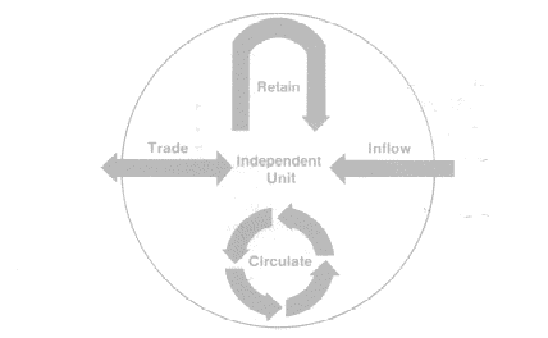
![]()
REGARDS THE COMMUNITY AS AN INDEPENDENT ECONOMIC UNIT
Economic development efforts can be easily dissipated unless the community is seen as a selfcontained economic unit. The Village Treasury in Kwangyung II, Korea, was the means by which local investment was encouraged. At the present time 85% of the village families invest in the cooperative savings and loan plan which helps the community build selfsufficiency.
INCREASES THE FLOW OF MONEY INTO THE COMMUNITY
Developing economies require outside monies and credit access to prime the pump of economic growth. A seed grant, loan and government assistance permitted the establishment of a common grain mill in Kwangyung II. A poultry industry, initiated through outside startup funds, increased egg sales 500% in five years. By quadrupling tangerine production, the primary cash crop, the average yearly family income increased from $882 in 1975 to $4165 in 1979.
RETAINS FUNDS IN THE COMMUNITY AS LONG AS POSSIBLE
Selfsufficiency depends on community residents spending cash locally. Production and local processing of barley, rapeseed, poultry and livestock supplied local consumers and outside markets. A new repair shop, trading post, bathhouse, storage sheds and small stores provided needed commercial services locally. Community profits were invested in the preschool, primary school, health outpost and training centre. These needed services employed an additional 4% of the village labour force in nonagricultural jobs.
CIRCULATES FUNDS RAPIDLY AND CONTINUOUSLY
The more often money turns over within the community, the better the cash flow and the opportunity to make greater profits for investment. As family income increased, many hired local builders to remodel their homes, replace roofs and install toilets. Preschool tuition paid seven village teachers; farmers used the mill to process grain; tangerine growers rented community warehouse space and trucks. The village treasury used the savings of 225 families to make 254 loans for agricultural and home improvements.
FUNCTIONS WITHIN EXTERNAL ECONOMIC REALITIES
Even at the local level a balance of trade is necessary with the inclusive realities of the municipal, regional, national and international economies. Road improvements increased storage space and the purchase of eight new trucks have facilitated export of Kwangyung II produce. Vegetables are raised yearround in vinyl houses and sold to hotels in Jeju City.

In order to promote local leadership, an effort is made by means of a training school . . . in methodology and theory, as well as in practice. When I was there [Maliwada] 220 people were involved ir the course. It is a very primitive school, but a school at a level where the villager encounters his own conditions. The training school operates for the whole area, so that replication schemes in
other villages are possible. Now, in three and onehalf years, 130 villages ar~ being reached by this programme, and I think that towards the end of the year about 200 villages will be covered. You cannot imagine the pride and joy of ordinary Indian peasants and the villagers when they see that they have their affairs in their own hands.
Dr. August Vanistendael, President, Cooperation et Solidarite, Brussels, Belgium, 1979.
Local Economic Development in Maliwada, India
The economic development of Maliwada, a rural village in India, is representative of many communities. At the time of its consultation in 1975, Maliwada's 1700 residents experienced a meagre subsistence lifestyle caused by extended periods of drought and underdeveloped resources and skills. Fourfifths of the work force was unemployed. Low village income prevented capital development for community improvements.
In five years Maliwada's economic situation shifted so dramatically that it now must import workers to fill newly created jobs. Land cultivation increased from 100 to 800 acres. Numerous small industries and commercial enterprises tripled nonagricultural employment opportunities for landless people. The establishment of a branch bank in the village made credit available to Maliwada and 13 neighbouring villages.
Maliwada followed four phases of economic development. The initiation phase began at the time of the consultation when a contract to build shipping crates was obtained from a nearby autoparts company. An ancient castle was rebuilt and a model house was constructed using donated materials worth $250. These construction efforts led village carpenters and masons to form a builders guild. With the assistance of a civil engineer, an agricultural technician and a $20,000 grant, farmers rebuilt earthen dams and wells and irrigated an experimental highyield hybrid sorghum field.
The second phase involved the rapid actuation of number of lowinvestment, labourintensive ecc nomic ventures involving the entire communit' Outside seed money supported the purchase
basic equipment and inventory. During this phase Bombay company loaned the village a truck an tractor, and a driver's training programme WE offered. Villagers established a nutritious food su' plement factory in a newly built industrial buildin and opened a brick factory. These efforts provide 100 new jobs. Each new venture was initiated as community industry; a share of the profits and percentage of each salary was used to support th preschool, health clinic and other village service~

The maturation phase began in the
second year of the project. It involved the initiation of longterm enterprises to provide stable, year-round employment and products for local consumption and export. A transition took place as several
industries went out of existence. The nutritious food contract was lost, the box contract expired and the loaned equipment was recalled. Those previously employed in the box factory now built new homes opened a sawmill and developed a specialorder wood products industry. Trained drivers started small transport companies or became bus and truck drivers outside the village.
The Maliwada Village Association was formed with an 11 member board which represented the village's social and economic enterprises and geographic neighbourhoods. The board administers the village fund and makes recommendations to the Village Assembly for all programmes. Through a series of events planned to accelerate economic develop- ment numerous outside advisors assisted the viIlage in initiating many new ventures.
In the fourth phase a solid economic base was established with more permanent industries, full employment" extensive local ownership and investment, and expanded markets. By 1981 extensive agricultural developments in sorghum, cotton, sugar cane and various fruits and vegetables were underway. Farmers started raising goats and sheep. More than 100 new and remodeled housing units were completed and several new public buildings added, including two industry sheds. Loans for crops and equipment were available. Business enterprises included 13 brick factories, a sawmill, three flour mills, a chalk industry, a welding shop, a broom factory, a pen factory and 20 new shops. Most of these improvements were financed by local residents from savings or bank loans.
Community Journey

A community experiences human development as a journey of transformation. It moves from hopelessness to courage as it develops plans for dealing with underlying contradictions. Substantial changes occur and the community becomes a symbol of hose for others. The four stages
of this journey correspond to the phases of project implementation.
During the first stage excitement bubbles. The consultation and events which launch new programmes create motivation and begin to deal with the community's felt needs. Guilds are formed to actuate new programmes. Maliwada guilds established the preschool, community gardens, literacy classes and village electricity. During the first stage emphasis is given to practical training in productive skills. Community pride grows as neighbourhood residents of all ages conduct workdays which visibly change the environment. People begin to believe that their efforts make a difference.
In the second stage the community experiences the intensification of momentum as substantial changes take place. Extensive construction is undertaken; clinics and sanitation systems are established; job skills are refined; initial industries are launched; and community leadership develops new capacities to coordinate and plan. The initial euphoria of new activities gradually dulls as more complex and longterm responsibilities become clear.
Sometime during the first year a crisis point is reached when certain expectations remain unfulfilled and change does not seem to happen fast enough. Cliques and special interest groups often emerge. Anger, suspicion and resentfulness set in, enthusiasm wanes and participation declines. During this crisis period two factors are critical: a regular pattern of eventful programmes and a substantial victory which demonstrates that the community's vision is in fact, being realized. By focusing attention and resources on one keystone miracle the community can experience a substantial change in its relationship to the situation_ When Maliwada leadership focused on the installation of a permanent drinking water system, the village saw that it was able to deal with the factor which most threatened its future. The keystone required that residents work with several adjacent villages to negotiate plans for public and private sector support. Meanwhile other villagers worked to reinstate the food supplement contract which now employs 140 people.
In the fourth stage, a new resolve prevails as the community decides to persevere in the development effort. People acknowledge the great accomplishments and manifest a new depth of commitment. Leadership assumes increasing responsibility for the management, organization and planning of the various programmes. The core leadership begins to move beyond the community to share the [earnings and methods of human development elsewhere. Early in the project's history the Maliwada Ambassadors Guild held village meetings and planning consultations in communities throughout Maharashtra, inviting others to join in a new village renewal effort, Nava Gram Prayas. In this fourth stage the documentation of accomplishments encouraged residents to consider more extensive structural relationships with the surrounding cluster of villages and an expanded role of social responsibility in other states of the nation.

Part Three
One Community Catalyzes Many Through Strategic Extension
What we must remember is that the future is not just something that happens to us. It is something thar women and men help create. Human beings, however, can only create what they can envision.... What is needed now? I would answer, a new set of images of possible futures that involve a decentralist yet still inter. connected and interdependent world, which will stimulate the development of a variety of new social techniques to enable that world to come about.
Elise Boulding, Professor of Sociology, University of Colorado, Boulder, Colorado, USA, 1977
Methods For Extending Global Responsibility

The earthrise image made people conscious of the interdependence of all societies; OPEC's influence on energy costs made this inter- dependence an economic reality for millions. Environmental issues further illuminated mutual
dependence on limited resources. This new awareness prompted the question of how to care responsibly for the whole earth and all its people. Global emphases such as the International Year of the Child, the recently concluded International Law of the Sea Conference and the search for systems that assure every community access to pure drinking water reflect this concern.
As groups and individuals seek solutions to universal issues, they find that good intentions are not enough. The projections of organizations such as the Club of Rome, which seek to identify areas in which immediate decisions are required on behalf of the future, have led to despair over the immensity of caring for the planet. Many have become disillusioned when encouraging breakthroughs have not spread automatically across a wide expanse of geography. Similarly, attempts to supply a blueprint of programmes in widely different situations have also discouraged hopes for quick improvement.
Some alternatives are beginning to emerge. The World Health Organization's eradication of smallpox verifies the widespread change that results from rapid, systematic geographic coverage. Training programmes in appropriate technology and barefoot doctor approaches prove that significant change can be made by local people without years of technical education. Villagebased agricultural demonstrations document the effectiveness of new methods and equipment which encourage traditional farmers to risk minimal assets on new technology. All these approaches view human beings as the most basic and promising resource. They trust people's capabilities, capacity for risk, and willingness to change when a more viable alternative is shown. Equipping local people to become self sufficient, selfconfident and selfreliant is critical to realizing the vision of care for the two million villages of the globe.
The replication experiment in Maharashtra, India, combines the values of systematic geographic coverage, demonstration and training in development strategies for multiple communities. The heart of the experiment is the Human Development Training
![]()
Institute (HDTI) offered in Maliwada, a showpiece demonstration of rapid socioeconomic development methods since 1975. Here community residents were trained to replicate Maliwada's methods in 25 districts across Maharashtra State. Later, residents from district level villages were trained to extend development methods to 207 additional villages, one in each county of the state.
The HDTI applies imaginal education principles to a comprehensive curriculum in human development methods. It is organized into modules which correspond to the programmatic chart shown below. Th is chart is a compilation of areas most frequently indicated by residents of the first eight global projects es crucial to comprehensive local development. Based on the principle that lasting transformation happens when rapid and simultaneous improvement is made in all areas, the chart reflects [earnings about the interrelated dynamics of human development and provides an overarching frame for organizing tactics and implementing specific tasks. Since 1976 the HDTI has been offered in nine nations to train local people to extend human development methods.

A comprehensive curriculum however,
is not enough. Underlying all programmes a community undertakes is the
intangible, but indispensable element, the human factor. It is relatively
easy to measure development by increased
agricultural yield or health and literacy improve. meets. A basic question persists: How is human motivation evoked and sustained over an extended period of time? The following five principles of cultural development hold insights about sustaining motivation using the example of Kapini, Zambia.
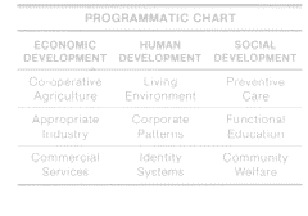
Effective Cultural Development
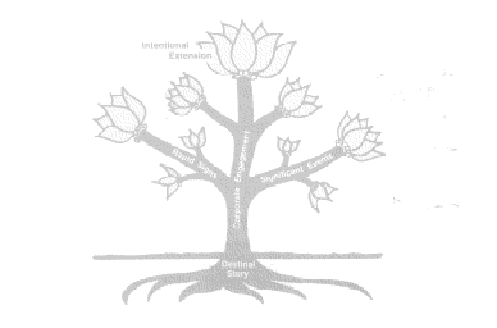
CREATES RAPID, DRAMATIC SIGNS OF POSSIBILITY
People experience renewed courage and determination when change occurs rapidly, is highly visible and affects a large number of people. After the consultation in Kapini, Zambia, a fourroom preschool was built to serve 180 children, the foundation for the training centre laid, all roads graded and a factory opened. These quick victories broke the previous image that nothing works here.
CALLS FORTH CORPORATE ENGAGEMENT
Even the greatest task seems possible when people make their own decisions and work together on something of mutual benefit. In two years, through daily efforts of 34 community workers and weekly workdays villagers completed 91 projects. The former disorganization of this community has been repIaced by pride and unity.
GIVES SIGNIFICANCE TO TIME AND SPACE
Routine daily life is enlivened by seasonal festivals, celebrative events and designated landmarks. Kapini's quarterly assemblies regularly attract 200300 residents. Awards are made, important dignitaries speak, new facilities are opened and feasting, singing and dancing continue for hours. Kapini's vitality and confidence in the future are evi- dent.
REQUIRES A DESTINAL STORY
Dramas, legends, tales of local heroes and revived cultural customs rehearse a community's historical purpose. The Insaka, a tribal network of village elders' councils, collapsed during Zambia's colonial period. This concept was recovered in Kapini by constructing a circular building, called the Insaka designated for regular elders meetings. Identification with a long and rich history has given residents a sense of stability and direction.
DEMANDS INTENTIONAL GEOGRAPHIC EXTENSION
When a community understands its accomplishments are performed on behalf of other communities, responsibility is fostered. In the project's third year, Kapini residents conducted 550 village meetings across the nation, began extension work in a cluster of 12 neighbouring villages and built a plan to launch demonstration projects in each province. Kapini villagers are motivated by having something to share with others.
For the past three years you have rebuilt your community to become a remarkable sign of hope to the villages of Mactan Island.... You have tripled your family income and provided employment opportunities for the whole community. You have created the structures that care for people's health, anticipate and prevent debilitating diseases. You have appropriated tools and techniques that increased your food production, expanded and diversified your cottage industry output . . . Your villageowned and operated electrification program is the envy of neighboring villages. But most impressive, you have shared your [earnings and your training programs with other communities in Mactan, the nation and the world.... The 24 Village Replication Scheme in Mactan and the Sudtonggan Human Development Training School enjoy the confidence and full support of all offices of the City Administration.
Excerpt from Letter to residents of Sudtonggan
Maximo V. Patalinjag, Jr., M.D., Mayor, City of Lapu Lapu
The 24 Village Replication Scheme in Mactan

Using the primary aspects and preliminary [earnings of the replication experiment in India, the Sudtonggan project in the Philippines designed its own innovative strategy for creating inten- sive demonstrations of compre-
hensive development on an extensive geographical basis.
In October 1978, twoandonehalf years after launching their human development project, residents of Sudtonggan decided to extend their learnings to others on Mactan Island. In December they hosted a Human Development Training School (HDTS) for residents from four other villages which had expressed interest in local development. Together the five villages decided to replicate three keystone programmes: a rattan furniture industry, a preschool and a health outpost. The HDTS graduates conducted planning consultations in the four new villages and designed monthlong campaigns to initiate each programme. The whole cluster met regularly to celebrate completion of one campaign and launch the next. When the keystone programmes were in operation, plans were made to include additional villages. In March teams of Sudtonggan residents and HDTS graduates conducted 222 village meetings in 100 communities across Mactan Island.
These villages identified the primary contradictions facing the island as inadequate nutrition, limited educational opportunities and a subsistence economic base. Plans were made to establish Early Learning Nutrition Centers (ELNC) in 24 villages across the island to address these contradictions
and spark local interest in improving other areas ol village life. The participating villages provided lane and a facility for the centre, personnel who were trained in Sudtonggan and local support for the programme. The government provided salaries for twc teachers per centre and the ICA served as traininc consultants. A Nutrition Council composed o representatives from the public, private, voluntar, and local sectors served as the administrative boarc for the network of centres.
In October 1979, teachers were trained through sixweek programme. Each of the 24 villages held. consultation in December which produced a com prehensive development plan. ParentTeache Associations were formed to implement plans beginning with the establishment of the ELNC.
Evaluation, planning, curriculum preparation an, training are now conducted by the 48 teachers an, 24 Sudtonggan volunteers at their biweekly co ordination meeting. Over 2000 children are serve, by the centres and malnutrition has been reduced b 60%. Each centre maintains a demonstration garden and receives soybean milk to supplement the children's diet. Teachers make home visits monthly to weigh babies and maintain health records of every family. The Lapu Lapu City Nutrition Council sponsors all training and handles financing. Some of the funds for the facilities were provided by private companies and the national sweepstakes.
Sixty representatives from the Southeast Asia Seminar on Health in Developing Nations visited
Sudtonggan in February 1981 to see a fully opera- tional local primary health care unit. This group, which included health ministers from seven nations departed with new images of effective mass delivery of community care.
Systems Of Extension

As human development projects mature, they enter an extension or replication phase. In each location
a comprehensive model is created
with intensive and extensive aspects. Then a phasing chart projectinq numbers and locations of
projects and a calendar of planning and training events are both built. Staff requirements are determined and personnel enlisted and trained. Visual decor is created, including maps showing each project. The geographic spread of projects across Mactan Island in the Philippines is shown in the map below.
Projects continually seek methods to reduce technical, material and personnel costs. The extension effort in the Philippines developed a pattern of cluster villages around Sudtonggan, the pilot project. This required fewer residential staff and created a more intensive demonstration than would have resulted from a series of single projects. Bubun and Bontoa formed multisector teams to serve a cluster of developing villages in Indonesia. African projects used LENS seminars (Leadership Effectiveness and New Strategies) and village meetings as ways to interest people from corporations, government agencies and villages in human development.
Through extension efforts to date, the following conclusions about multiple village development were reached. Although replication needs to be carefully tailored to fit geographic, governmental, cultural and demographic uniqueness, each plan will have three common characteristics. First, signal communities are launched to demonstrate methods for rapid socioeconomic development. Second, extension from these demonstrations is planned utilizing community residents and local expertise. Finally, ongoing awakenment, training, interchange and demonstration systems are activated in surrounding communities.
Awakenment
Because they are accessible and catalytic, demonstration projects use various means to awaken other communities to the possibility of their own development. They host site visits, give slide presentations and hold meetings in other communities. Woburn Lawn in Jamaica held town meetings in over 40 villages in the Blue Mountains. Project residents in India and Africa designed Women's Advancement Modules to catalyze their engagement in development.
Training
Demonstration projects become training centres for new villages. Literacy training is offered. Practical onthejob training develops such skills as welding, spinning, sewing, canning, baking and management. Community leaders are trained to conduct workshops and planning meetings. The HDTI is a primary instrument in leadership training.
Interchange
As a number of communities in a geographic area initiate development, interchange of village leaders becomes important. Farmers from one village show others how to set up a dairy; a village sends masons to unblock a backlog of construction in another location. When established leaders spend time outside their home village, other community people have an opportunity to test their leadership skills. I n several places multisector teams have formed. The Chikale cluster near Bombay, India, has an advisory group of government, business and professional men and women who meet regularly. They participated in the planning and implementation of the medical centre, agricultural loan scheme and irrigation system.
Out of the many
Gather us today in unity
Require of us a song
Now, we can sing
Jamaica a song
It's our new land.
Woburn Lawn
song

Demonstration
Where community patterns have long been frozen, a dramatic demonstration of possibility is required to move people beyond inertia. Many demonstration projects use schemes whereby clusters of communities initiate equipment pools, bulk purchasing, transportation service, processing enterprises and training programmes. In Indonesia, Bubun and six other North Sumatra coastal villages expanded their fishing industry with cooperative marketing and equipment financing. The 24 Early Learning Nutrition Centers on Mactan Island demonstrate a primary health care network in the Philippines.
Conclusion
Future Challenges for
Human Development
A few years ago Richard Critchfield noted in a contribution to Human Behavior magazine that villages across the world were beginning to meet the challenges of the twentieth century through local selfdevelopment. Today demonstration projects confirm that observation. Moreover, they are showing that they can catalyze development in other communities which face similar issues. As clusters of communities experiment with forms of cooperative action, they further demonstrate that social reconstruction is possible through locally based efforts. The challenge to local communities in
the '80s is to relate themselves to an emerging global movement which is effectively transforming local social patterns and to share the social methods they have found useful.
Through the extension and replication phases, local people created networks for serious collaboration with corporations, agencies and organizations whose experienceand resources are vital to local development. This growing trend toward coalitions, consortiums and partnerships reflects a new conviction on the part of all sectors that by joining forces, it is possible to deal more effectively with common challenges. From October 1980 to June 1981 representatives from the public, private and voluntary sectors joined local community residents for over 70 regional consultations in 30 nations to determine the potential for human development in each region. The future of human development requires the continued improvement of methods for creative collaboration across the four sectors.

When the replication experiment in India entered its third phase, interest grew in sharing the experiment's results with a wide crosssection of those working in world development. In response, an International Exposition for Rural
Reconstruction: Spotlight on Success is scheduled
for late 1983 in India. Agencies and prominent individuals from the worldwide development community have formed a sponsoring body for the exposition.
Representatives from local communities and development agencies across the globe will be invited to spend ten days creating an inclusive picture of what is happening and what is possible in world development. During this time, participants will identify the major challenges facing local development and create proposals for their solution. Teams will spend several days in the field observing projects in daily operation and documenting useful socioeconomic methods. The concluding assembly will produce a concise compendium of effective development methods. The challenge to development agencies in the coming decade is to continue to learn firsthand what is needed from the grassroots and to incorporate the dynamic of community building into macro strategies.
At the centre of human development are methods which encourage local initiative, participatory planning and a comprehensive approach. Methods of economic and social development are not restricted to neighbourhoods and communities but are applicable in the workplace or the wider context of state, province and nation. The challenge to all those who care about the future of human settlement is to empower a new volunteerism and demonstrate effective teamwork which encourages people from all walks of life to participate again in shaping meaningful relationships to their communities and places of work.
 |
 |